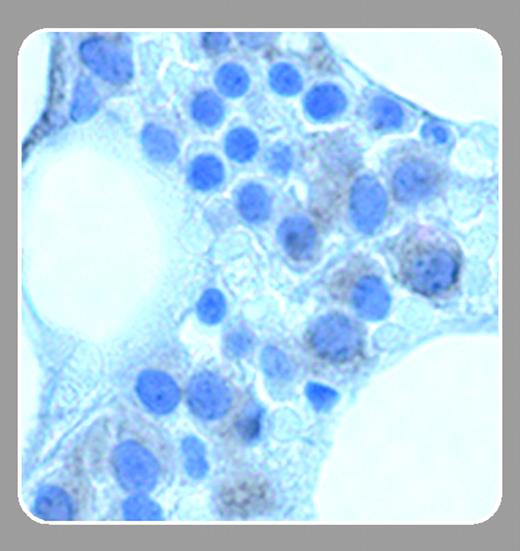For many years, investigation of new therapeutic agents for multiple myeloma (MM) and chronic lymphocytic leukemia (CLL) has been limited to empiricism based in part on our lack of understanding of the pathogenesis of each disease. During this time period, basic laboratory studies have led to a better understanding of the pathways that promote normal immunologic function in nontransformed B cells and how these pathways are effectively perturbed in the malignant transformed B-cell counterpart to promote the manifestations of disease. Such work has led to identification of several molecules that promote survival, including members of tumor necrosis factor superfamily ligand family B-cell–activating factor (BAFF) (also known as BlyS or B-lymphocyte stimulator) and a proliferation-inducing ligand (APRIL). BAFF and APRIL serve to enhance normal B-cell response to antigens, production of antibodies, and survival.1 In several autoimmune diseases, APRIL and BAFF are present in their most active form and likely play a role in the pathogenesis of these processes.2 Recently the importance of APRIL and BAFF in the pathogenesis of several B-cell malignancies has been recognized. In this issue of Blood, Kern and colleagues (page 679) extend this knowledge further by providing a detailed functional assessment of both BAFF and related APRIL along with their corresponding receptors in primary CLL cells. Prior to this study and another by Novak et al,3 the main source of BAFF and APRIL was believed to be monocytes, granulocytes, and dendritic cells. The compelling studies herein demonstrating expression of BAFF and APRIL from whole cellular lysates derived from patients' CLL cells confirm the previous observation of Novak et al.3 The presence of BAFF and APRIL is also demonstrated on the cell membrane and in the serum of samples derived from patients with CLL, suggesting an autocrine loop of stimulation from these cells. As with other inappropriate autocrine loops following neoplastic transformation, Kern and colleagues confirm quite rigorously that BAFF and APRIL promote cell survival of primary CLL cells against both spontaneous apoptosis in vitro and that induced by the potent lympholytic agent flavopiridol. Their studies extend beyond this functional assessment to definitively establish a potential autocrine cytokine network that mediates its biologic effect at least in part through activating the nuclear factor κB (NF-κB) pathway. Altering this signaling pathway by blocking BAFF interaction with the BAFF receptor disrupts a positive survival signal and leads to CLL cell apoptosis. Novak and colleagues (page 689) in an accompanying paper in this issue of Blood describe a similar important role for BAFF in multiple myeloma where BAFF expression has been noted and serves to disrupt apoptosis in multiple myeloma cell lines and primary tumor cells. This work extends previous important findings on BAFF and APRIL in CLL. Overall, both of these studies provide strong support for further investigation of the signaling pathways activated following ligation of these specific receptors and dissection of differences that might exist based on VH mutational status in CLL or cytogenetic group in both CLL and multiple myeloma. From a clinical standpoint, these data provide compelling justification to consider initiation of trials in CLL and multiple myeloma with agents such as LymphoStat-B, a neutralizing antibody to BAFF that has the potential to interrupt this important autocrine cytokine network. Additional efforts to develop antagonistic antibodies or small molecule inhibitors to these specific ligand-receptor signaling pathways would be of great future interest for therapeutic use in CLL and multiple myeloma.
INSIDE BLOOD|
January 15, 2004
BAFF and related proteins: a new therapeutic target for B-cell malignancies Free
John C. Byrd
John C. Byrd
The Ohio State University
Search for other works by this author on:
Blood (2004) 103 (2): 372–373.
Connected Content
This is a related article to:
Involvement of BAFF and APRIL in the resistance to apoptosis of B-CLL through an autocrine pathway
This is a related article to:
Expression of BCMA, TACI, and BAFF-R in multiple myeloma: a mechanism for growth and survival
Citation
John C. Byrd; BAFF and related proteins: a new therapeutic target for B-cell malignancies. Blood 2004; 103 (2): 372–373. doi: https://doi.org/10.1182/blood-2003-10-3632
Download citation file:



